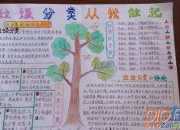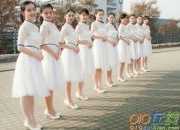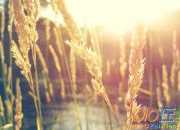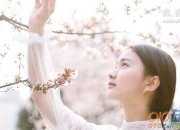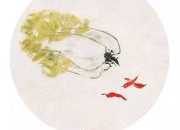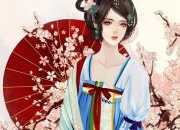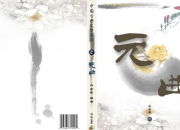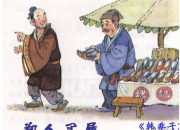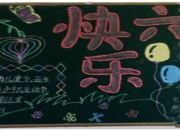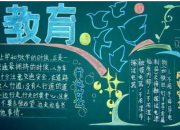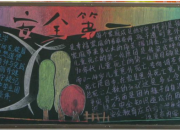天坛中英导游词
时间:2021-08-31天坛中英导游词
我们应该了解天坛才能够为游客更好的介绍?下面是小编为大家整理的天坛中英导游词,以便各位了解!
各位游客,我们今天所要参观的就是以前皇帝祭天的地方——天坛。
Dear visitors, today we will visit the emperor worship was formerly place - the temple of heaven.
明朝永乐皇帝迁都北京以后,在北京南城仿照南京的大祀殿建立了这作用于祭天的圣坛,占地面积达到了273万平方米。主建筑是大祀殿,也就是今天祈年殿的位置上。天坛有外坛墙和内坛墙,北面是圆形,南面是方形,取意天圆地方。在一开始,祭天和祭地都是天坛,直到明嘉靖年间在北城修建了地坛,才分开的,并且新增了圜丘坛,用于孟冬祭天,把原来的大祀殿改为大享殿,专门用于孟春祈谷,当时殿宇屋顶已经是三重檐了,从上至下的蓝黄绿三色瓦分别代表了天地万物。而在乾隆年间,有将大享殿改为现在的祈年殿,而将屋顶瓦片都改成了蓝色的琉璃瓦。从而形成了今天我们所看到的这个世界上最大的祭天建筑群。
Ming yongle emperor after moved in Beijing enterprise of Beijing, the big site modeled nanjing is established for this role in praying to alter, covers an area of reached 273 million square meters. Lord architecture is big, is also the site of QiNianDian position today. The temple of heaven has outer wall and the altar, the north is round compound has wall, the south is square, take meaning nature round place. In the beginning, heaven and offering ground is the temple of heaven, until the jiajing years in beicheng built ditan, just separate, and new MengDong HuanQiu altar, for the original big praying to the site, and great temple, instead, when MengChun specially for the mega garden just house roof was three double-hipped roof, from top to bottom blue and yellow green colors representing the earthen universe. And in qianlong multiplied, instead of the house, and now QiNianDian with roof tiles blue glazed tile. Thus formed today what we see of the world's largest ceremonial buildings.
可是这样一个祭天圣地,却也曾经在1860年时遭到英法联军的洗劫,继而在1900年的时候又遭到了八国联军的蹂躏。在1916年袁世凯登基的时候也曾经在天坛上演了一出祭天的闹剧。在1918年,天坛最终还是以公园开放。解放以后天坛不仅成了著名的旅游景点,而且还是北京城市绿地的组成部分,来这里的不光是旅游者,还不乏一些专门为了强身健体的老人们。
But such a praying to the holy land, but also once was in the anglo-french allied in 1860, then the looted in 1900 was again the ravages of g8 coalition. In 1916 the reign of yuan shikai once also in the temple of heaven has played a ceremonial farce. In 1918, the temple of heaven park end up with open. After the liberation tiantan not only become the famous tourist attractions, and still part of the Beijing urban green space, come here not only is the tourists, also have some specifically for the old people vti).
现在就让我们沿着当年皇帝登坛的路线开始此次游览。
Now let's put the altar along the route that the emperor start the tour.
现在我们正沿着天坛建筑的中轴线向南行进,将要看到的就是古代皇帝祭天的圜丘坛。圜丘有两道围护墙,使外方内圆,符合天圆地方的说法。每道墙都有四组棂星门,从东面依次是泰元、昭亨、广利、成贞,每组三门,共有24座,称为“云门玉立”。大家可以注意到,棂星门的大小都不一样,这是因为中门是上帝专用的,所以高大;皇帝只能从左侧的门进入;而其他的官员只能从右边最小的门通过。而门外的一座平台就是皇帝在祭天大典之前更换祭服和盥洗的地方,叫做具服台。来到了圜丘坛下,我们马上要开始登坛了,不过我请您留心每层坛面都要有多少台阶。到了最高层,大家也就都发现了,坛上所有的台阶数,护板数都是九或者九的倍数。每登上一层,都要有9层台阶,台面上的石板中间的叫做天心石,外围第一圈砌着9圈巨大的扇形石板,第二圈18块,以此类推,到了最外边的第九圈正好是81块;而大家抬头就可以看到的围护板被四面台阶分为四个部分,每个部分也都有9块,而中层的`围护板是18块,下层的是27块,这些难道都是巧合么?当然不是,因为根据阴阳五行来说,9是极阳数,所以古代的工匠便用这个数字来赋予圜丘台意念上的崇高。
Now we are temple buildings along the axis to the south road, are going to see is HuanQiu altar of ancient emperor worship. There are two ways HuanQiu surrounded wall, make foreign inside the circle, accord with that nature round place. Every wall all have four groups lingxingmeng, from east ordinal it is tai yuan, zhao heng, GuangLi, ChengZhen, each group sanmen, a total of 24 seats, called "cloud gate jade". You can notice, lingxingmeng size are different, this is because in door is god dedicated, so tall; Only from the door of the emperor into; But other officials can only from the right side of the door through the smallest. And the same platform is emperor ceremonies in worship before replacement offering clothing and wash one's hands and face with local, called served Taiwan. Came to HuanQiu altar, we'll start next put altar, but I please pay attention to each layer of how many steps square. To top it all, we also found, the altar all steps number, guard board number are nine or multiples of nine. Every board a layer, have 9 steps, mesa tablets of stone, called pure among the first lap the periphery of nine laps huge brick slab, the second lap fan 18 blocks, and so on, to most outside the 9th lap is just 81 block; And everybody looked can see enclosure panels were all steps is divided into four parts, each part also has nine pieces, while middle-level enclosure panel is 18 blocks, lower is 27 pieces, these aren't all be coincidence? Of course not, because according to the Yin yang-five elements, it is extremely Yang number nine, so ancient craftsman will use this digital to give HuanQiu sets the noble thoughts.
说完了神坛的奇妙,我在给您介绍一下祭天大典的盛况。到了每年的冬至,皇帝就要在这里祭天。在大典前两天,皇帝要在故宫里进行斋戒,而到了第三天,也就是冬至前一天,就要到天坛的斋宫进行斋戒。冬至那天,在日出前七刻,现在的凌晨四点多,奏报时辰,皇帝起驾,斋宫东北角的钟楼开始鸣钟。到具服台盥洗更衣,神牌都送到台面相应的位置,也就是七组神位,称作七幄;在圜丘前燔柴炉上放一只牛犊,用松枝燔烧,西南的望灯杆望灯高悬,点燃蟠龙通宵宝蜡,台南广场上排列着奏乐队,配合着中和韶乐,在文武百官的陪同下,祭天大典就正式开始了,皇帝由南棂星左门登坛,这时钟声停止,到了第二层南侧拜位站好后,听候司赞人报仪程。恭读至皇天上帝的祝文。礼仪结束以后,要将神位前的贡品分别送到燔柴炉(从正位幄次撤下的祭品再次焚烧,皇帝也要一旁恭立目视,称为望燎)和燎炉(圜丘坛共有12座燎炉,在瘗坎北侧,从东向西排列着8个;内围护墙东西棂星门外各有一对。从配位幄次车下的祭品分别送到8个燎炉内焚烧,而四个从位幄次的祭品送到棂星门处)焚烧,烟雾腾空,象征着送到天庭。而后还要将牛尾、牛毛、牛血送到瘗坎掩埋,象征不忘祖先茹毛饮血之意。在这个典礼上,需要特别提到的是皇帝恭读祝文所站立的地方,就是刚才所说的台面中心天心石。他是天坛三大声学现象之一。在这里朗读的时候声音特别洪亮,而且现在这里也是一样的,各位游客不妨体会一下这奇特的效果,也像当年的皇帝一样,向上天诉说自己美好的愿望。
